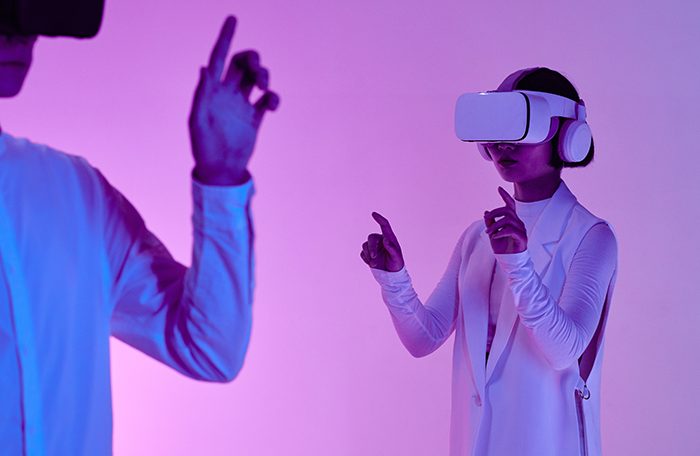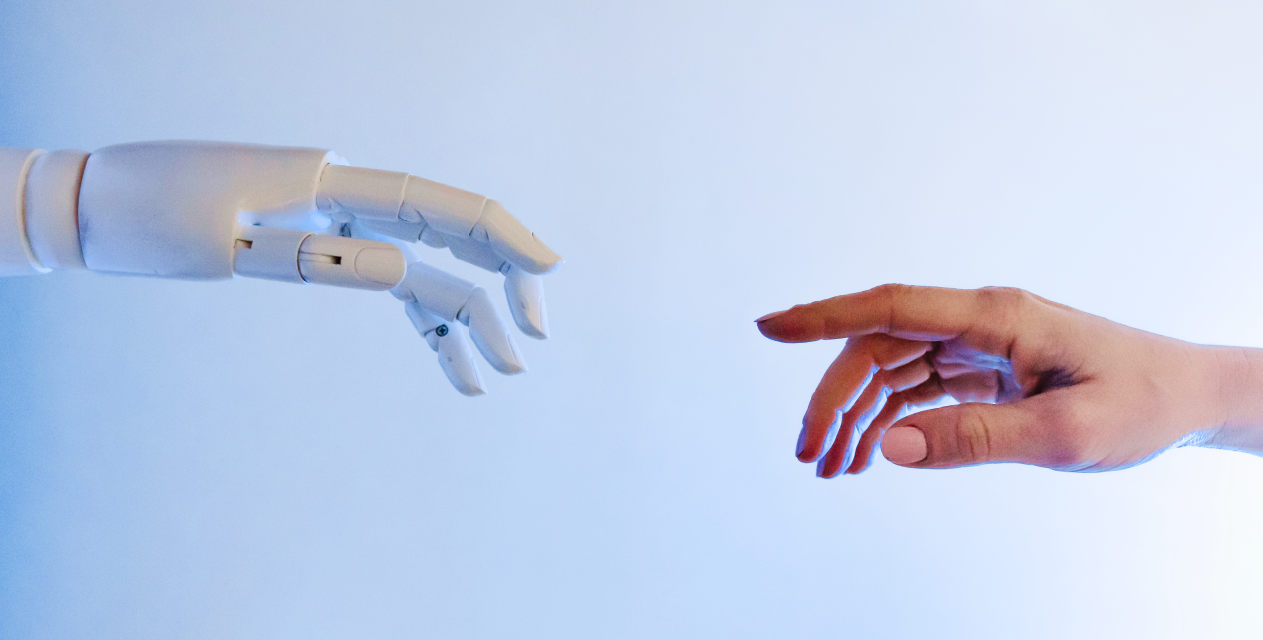A few decades ago, marketers had a limited arsenal at their disposal. The available software served recommendations based on static assumptions and data. Those insights were not enough for efficient scaling. The advent of AI in the consumer domain has revolutionized the industry. Today, the artificial intelligence market plays a pivotal role in helping marketers connect with their target audiences.
AI is the primary aspect of data strategies for 61% of marketers. The latest technologies allow brands to zoom in on the micro-level mannerisms of their customers and keep up with their evolving needs. Discover top trends in AI marketing in 2022.
How is AI Used in Marketing?
Talented marketers can wield these novel technologies in a variety of ways. The applications of AI for marketing are manifold. Machine learning has brought an array of innovations, from predictive forecasting to visual search. Professionals can delegate routine tasks and complex analytics to AI to focus on the creative side of things.
For example, the “If you liked this, you might also like…” recommendations, which are now commonplace, are generated by AI. Machines analyze diverse data about consumers’ behavior on the internet to suggest products, services, or content they may like. E-commerce giants like Amazon leverage deep learning — “teaching” computers different skills — to offer suggestions.
AI produces dynamic and relevant creatives that boost ROAS. According to the artificial intelligence market forecast, the segment will reach $93.53 billion by the end of 2021. The applications are impressively versatile. Discover how AI and marketing are now intertwined.

AI Marketing Trends
Why is the AI market forecast so promising? First, AI in advertising helps businesses stand out and outshine the competition online. It drives brand awareness, sales, and loyalty. Machine learning tools not only analyze but also predict consumer behavior. Targeting is more precise than ever, while personalization establishes strong connections with customers.
COVID-19 has accelerated digital transformation. With the shift to online retail, many companies have had to adapt to the new reality quickly. Artificial intelligence for marketing facilitates the transition, as it streamlines campaigns in many respects. Companies can find their ideal consumer easily and reach them where they spend most of their screen time through AI advertising.
For users, artificial intelligence in marketing brings enhanced convenience through innovations like visual search and voice search. Today, they can find a product by giving a voice command to a smart speaker, or taking a picture with their smartphone.
The artificial intelligence market brings undeniable value to businesses of any size. The computing power, accessible data, and usability are all unprecedented. Today, marketers can predict outcomes based on rich and actionable insights about their audience and find the highest value lead. Here are the key marketing technology trends to follow in 2021.
Audience Hyper-Segmentation
Successful campaigns on any platform require an in-depth understanding of the audience, its preferences, perceptions, and habits. In the early days of the trade, experts relied on assumptions drawn from limited data. Today, AI for marketing facilitates a granular approach.
Advanced programs collect and process gigantic volumes of data from multiple sources. The scale is unprecedented. As machine learning algorithms sift through the information, they generate valuable insights and make connections between the data points. Businesses can leverage hyper-focused targeting, which is another reason for the growing AI market size.
Hyper-segmentation refers to dividing existing and potential customers into small subgroups based on shared characteristics. The systems look at how the users interact with your content, how many times they visit particular websites, and how they engage with advertisements. The output is a laser-focused framework.
The Royal Canadian Mint, which also sells collectibles, has recently embraced hyper-segmentation for its upsells and cross-sells. This has involved defining groups most likely to buy new coin designs and identifying customers most likely to spend more on them in the future. Based on the insights, the institution crafted messages that resonated with them. One campaign with hyper-segmentation has brought 140,000 new customers.
Dynamic Personalized Ad Serving
Artificial intelligence for marketing lets brands optimize ad performance in real-time with an unprecedented level of personalization. Instead of inundating users with generic content, Facebook and Google serve advertisements with a narrow focus adapted to personal needs. Cadbury’s ad campaign matching Dairy Milk flavors to users based on their Facebook profiles achieved a 65% click-through rate (the average CTR for ads on the network is just 0.99%) and a 33.6% conversion rate.
Personalization is based on data collected by the machine learning algorithm. It compiles, digests, and extrapolates these insights on a user’s behavior over time. This is done on a massive scale, and the results are impressive.
According to Forbes, the vast majority (80%!) of consumers are likely to purchase from brands that deliver personalized experiences. Meanwhile, over half (63%) of them stop purchasing from companies whose personalization tactics fail. Finally, unique shopping cart recommendations prompt 92% of shoppers to make purchases online.
Using AI-powered tools by Aitarget, brands generate relevant advertising for Facebook, Instagram, Snapchat, and Tik Tok automatically. The company’s video tool creates personalized video ads en masse with fine audience splitting to ensure relevance. The system allows targeting by language, country, demographics, interests, and more. The ads are tailored to the corporate identity and give the client full control over the result. They are even updated automatically based on the latest stats and changes in the company’s product feed.
Content Recommendations
Video giants YouTube and Netflix have served personalized recommendations for years. Their users see suggested content based on their preferences and history, which drives engagement and content consumption. Artificial intelligence in marketing gives brands an edge. Not only are the recommendations based on the previously viewed content, but they also incorporate predictive analytics.
Today, Netflix has over 209 million users who spend billions of hours streaming the content. Based on this colossal volume of data, the company builds predictive models to keep them satisfied. Its algorithms consider various data points, such as their preferred genre, search keywords, ratings, preferred devices, and even pausing.
Advanced software drives the AI market size, as it is now capable of predicting what will be interesting for the users, and what types of content they will engage with. Customers are offered content they are looking for in real-time.
The focus is also more narrow. Previously, marketers could assume that a member of group A would appreciate a video ad about soccer cleats. Now, armed with AI, they can show a female customer an ad about women’s soccer cleats sold at a store near her home. Targeting contributes to the growth of the artificial intelligence market size.
Email Marketing Dynamic Optimization
This is not the newest application of AI in advertising, as email marketers have leveraged automation and segmentation for years. Today, machine learning lets them streamline their campaigns and dramatically enhance efficiency through hyper-segmentation. They can also optimize timing for narrow cohorts.
First, marketing artificial intelligence analyzes ways in which users interact with the content. The algorithm uses this data to boost engagement. For example, your emails are delivered at times when each user is most likely to open them, while the content is tailored to their personal preferences.
Artificial intelligence eliminates the guesswork, and it can deal with different tasks. For example, an algorithm may generate effective subject lines that capture attention or even write portions of the messages.
When online retailer Dixons Carphone used the Phrasee tool to generate eye-catching subject lines, it saw a 10% growth in open rates and a 25% increase in click-through rates. The company’s Black Tag Event with improved subject lines brought a 42% boost in open rates, while the campaign’s revenue doubled.
Marketing artificial intelligence can generate newsletters with unparalleled personalization. You can also clean up your mailing lists to get rid of spammers that can cause blacklisting of your email address or IP.
Marketers do not have to guess what time is the best, or what images and wording they should use. They can create different versions of their emails and let AI distribute them. By delivering the right creatives at the right time, brands achieve improved results and efficiency.
Visual Search
Another reason for the upbeat AI market forecast is the advancements in image search. Sometimes, customers are trying to find a specific product online without knowing the brand. Using real-world images as the input, AI analyzes the content and context to deliver relevant results.
The benefits of AI for e-commerce are spectacular, in particular for home decor and fashion products. This fuels the expansion of the artificial intelligence market size. A whopping 93% of buyers are likely to purchase a product if they find it via image search on a smartphone.
Pinterest Lens recognizes over 2.5 billion objects across both home and fashion segments. It uses pins and smartphone photos to suggest related products and themes. According to the platform, which is extremely popular with millennials, over 600 million searches are performed monthly through its visual discovery engine.
A consumer searching for a specific piece of furniture or garment can take a photo of the item and find the product via image search in seconds. On the downside, this dimension of AI marketing has a long way to go. Its adoption is gradually increasing as the technology is improving, so we can expect more exciting future trends in digital marketing.

Dynamic Pricing
Some marketing technology trends transform pricing, which has always been a pain in the neck for both CROs (Contract Research Organisations) and CMOs (Contract Manufacturing Organisations). Historically, they charged clients based on rates determined by algorithms. The latter considered a mix of criteria, including the prices of competitors, production costs, demand, etc.
Any business wants to maximize revenue. AI has disrupted the conventional process, as it adjusts pricing to fluctuating variables 24/7. As it is dynamic, the rates rise or fall automatically based on real-time data. They adapt to consumer preferences and behavior patterns incessantly.
Machine learning underlies new market trends in optimization that maximize profit and inventory. Less waste is generated, which reduces costs for businesses and improves their image in the eyes of eco-conscious consumers. Meanwhile, customers get the most accurate value for their purchases. This is a win-win.
Billions of users have experienced dynamic pricing. It optimizes yield for airlines and hotels based on supply, demand, proximity, seasonality, and other criteria. Such popular platforms as Booking.com and American Airlines have embraced AI-powered rates and discounts. This explains why buyers from different locations see different prices for the same flights or the same hotel rooms.
Voice Search
Smart speakers have become commonplace. Today, almost a quarter of the US adult population owns at least one device like the Amazon Echo or Google Home. As these AI-powered gadgets are a household staple, they are viewed as necessities. Google does not only create the devices, but it is continually improving its search algorithm for enhanced processing of natural language.
AI.marketing has disrupted common SEO practices and created new opportunities by highlighting the importance of getting to the SERP Position Zero (the Featured Snippet of the search engine results page). It is now the holy grail for marketers. When consumers order their speakers to search for products or services, the featured snippet is where they read from.
These new market trends are developing quickly. Domino’s Pizza allows its US customers to make orders and check their status without even using their app. Nestle has developed GoodNes, a special Alexa skill that is a hand-free cooking companion. It inspires users by providing recipes and step-by-step instructions. Brands like Purina, Johnnie Walker, and Zyrtec have developed Alexa apps that benefit them in different ways. While offering value to the consumers, they keep the brands integrated and prominent at the tech forefront.
Can AI Replace Digital Marketing?
The artificial intelligence market forecast is impressive, which prompts some experts to predict that ai.marketing will render millions of jobs obsolete. However, promotion in the digital space is just too nuanced. These tools and technologies help businesses discover what resonates with their target audiences, but they do not produce fresh ideas.
Humans are attracted to empathy and creativity, which is the X factor. These are the skills algorithms do not replace. Companies must think outside the box to engage people meaningfully throughout their online journeys.
Businesses must not expect machines to generate innovative content. Instead, they can develop hybrid models to get the best of both worlds — artificial intelligence and marketing expertise. AI allows them to get to know every user and achieve unprecedented results through applications of machine learning. We can expect future trends in digital marketing to be fueled by AI, but it is unlikely to replace human creativity.












